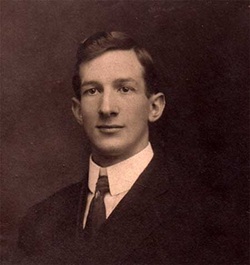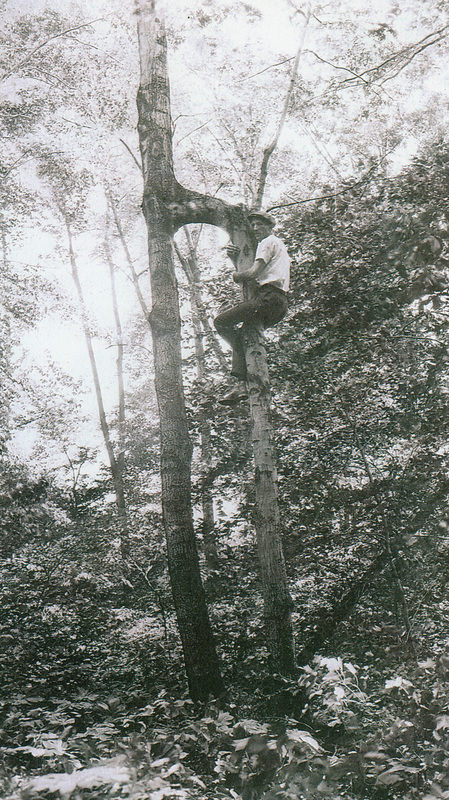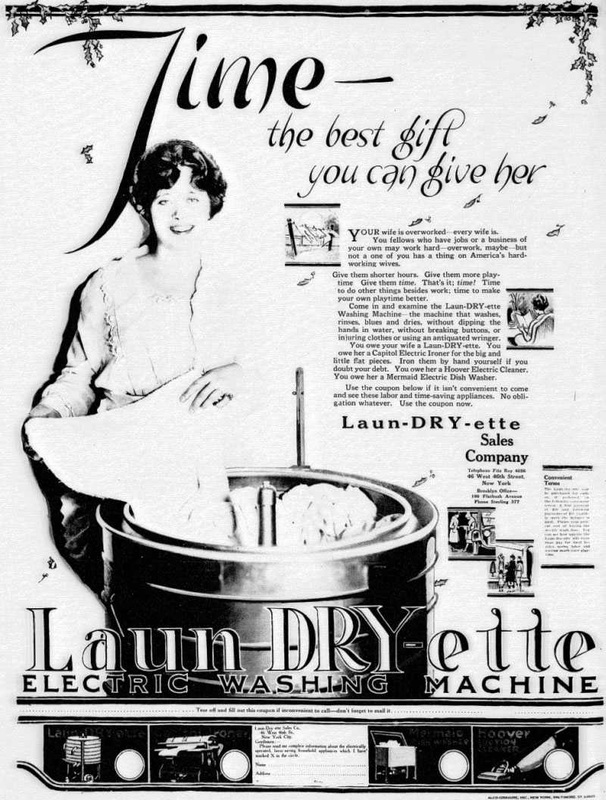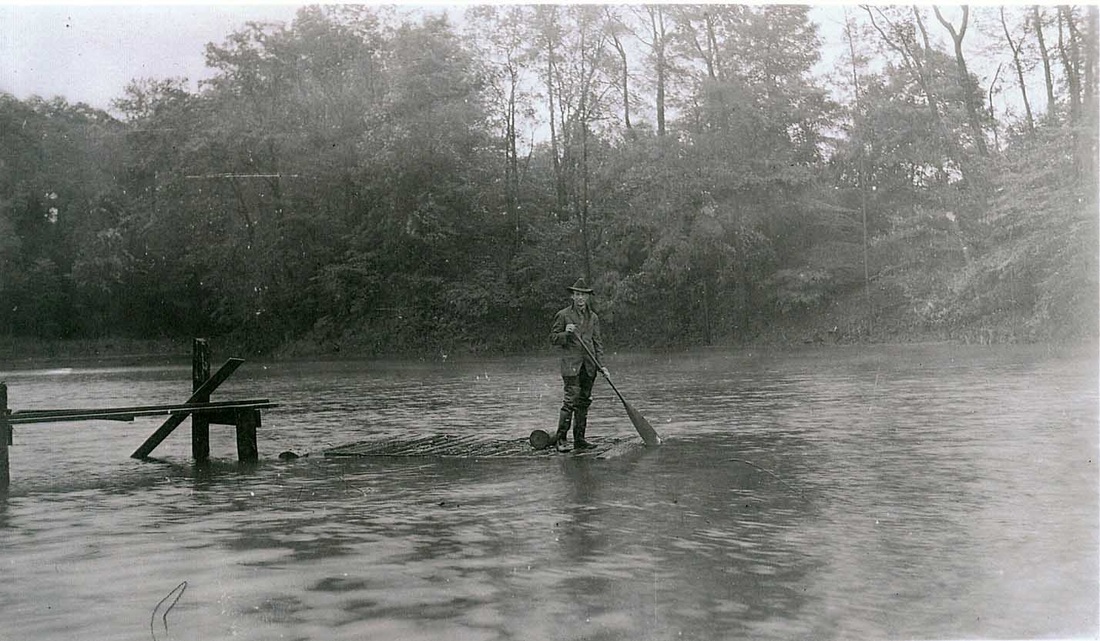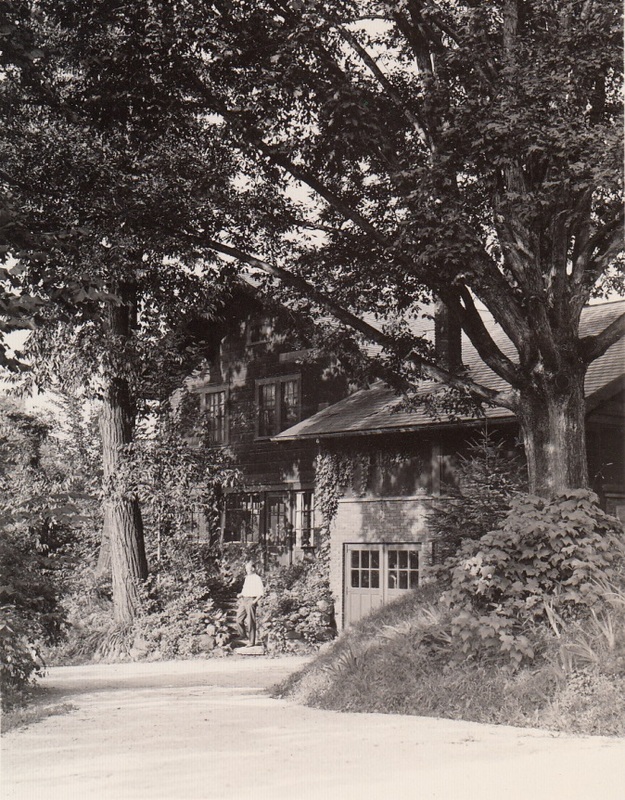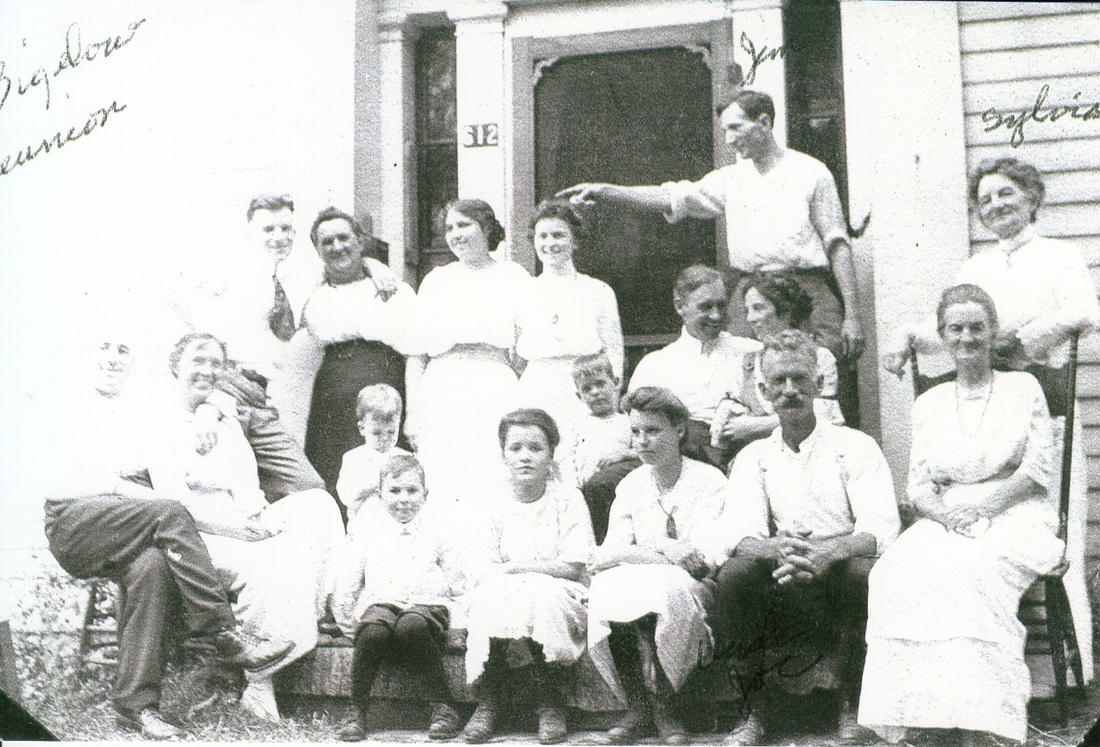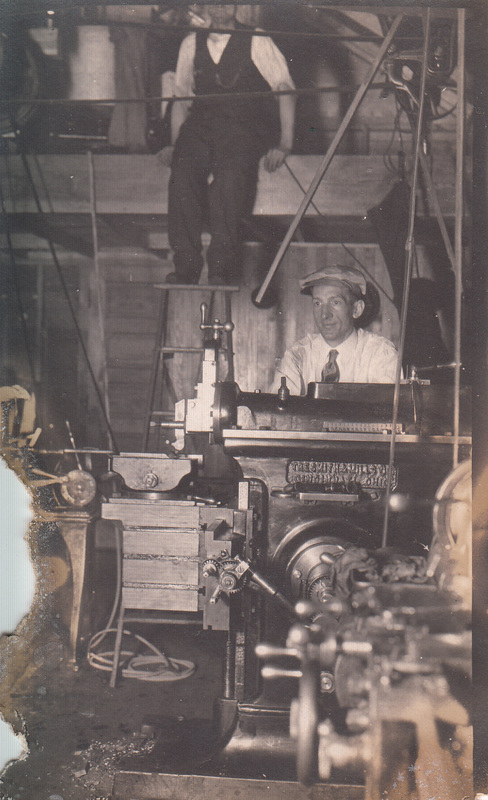Jim Kirby
Growing up, Jim Kirby watched his mother at her endless round of housekeeping chores. He thought that women were stuck spending way too much time on monotonous drudgery, and that much of their repetitive work could be replaced by electrical appliances. With that goal in mind, he began designing and building such devices.
Many people have heard of Kirby Vacuum cleaners. But that was just one company that decided to name one branch of their operations after Kirby. Kirby also invented improvements to electric dishwashers, irons, and washing machines. Kirby invented the first practical spin cycle for washing machines.
Prior to Kirby’s mass-produced “Laun-DRY- ette”, women had to haul heavy, soaking wet clothes out of the wash tub and through a wringer.
Kirby eventually amassed over 150 patents, most involving laundry or vacuum cleaners. But there was a sprinkling of marvelously unrelated sparks of genius: air conditioners, a fishing reel, a lake. Here is a list of his patents.
By age 35, Kirby had made his fortune.
Able to go anywhere and do anything he wanted, he chose to move from his native Cleveland twenty miles south to the town of Richfield. Beautiful though the land was, Richfield did not have the electricity he needed. So Kirby designed and built a hydroelectric mill to generate the power he needed.
But before he could build the mill, he had to dam up the creek to create a millpond. Trouble is, artificial ponds fill up with silt and have to be dredged out periodically. But this was the guy who was all about avoiding drudgery. He simply didn’t want dirt getting into his lake in the first place. So he devised dams that would let clear water in, but keep muddy storm water out. The storm water would be diverted into huge drain pipes that ran under the lake bed. As far as anyone knows, this is the world’s only patented lake. Kirby also designed a sled so that would permit a man to clear out the drain occasionally.
While the lake was filling up, Kirby built his house just above the high water line. Next he constructed the mill with a wheel that balanced on ball bearings and could turn with just a trickle of water. The room above the generator became his workshop. When he wanted to take a break from tinkering he could pull down the hinged stairway and dive off the little porch into deep water.
Just for fun he built a dance hall on old streetcar springs and ran a swinging bridge across the dam spillway. He put up a combination picnic shelter/boat landing just below the main house. He constructed a pier that ran halfway across the lake, and a boathouse with a dock on the far shore. He hired a botanist to travel around Ohio and bring back unusual specimens of wildflowers for his garden. He stocked his lake with fish and then trained some of them as pets who would swim up to him so he could tickle them under their fishy chins.
Kirby opened his lavish grounds to Richfield townsfolk every Monday and Friday (and by special request). Within a few years, Kirby felt he needed a bigger lake for bigger fish. He got permission from his nearest upstream neighbor to create a shared lake.
After fifteen years at this estate, Jim Kirby and his wife Nellie moved. Their new house, designed by Jim, was barely a mile away from the old one. It also soon had a large lake.
Jim continued inventing, keeping up with his business interests, raising prize cattle, traveling with Nellie, and of course, fishing.
After Nellie died, he retired to Florida, where he developed the Oceanside shopping center.
By age 35, Kirby had made his fortune.
Able to go anywhere and do anything he wanted, he chose to move from his native Cleveland twenty miles south to the town of Richfield. Beautiful though the land was, Richfield did not have the electricity he needed. So Kirby designed and built a hydroelectric mill to generate the power he needed.
But before he could build the mill, he had to dam up the creek to create a millpond. Trouble is, artificial ponds fill up with silt and have to be dredged out periodically. But this was the guy who was all about avoiding drudgery. He simply didn’t want dirt getting into his lake in the first place. So he devised dams that would let clear water in, but keep muddy storm water out. The storm water would be diverted into huge drain pipes that ran under the lake bed. As far as anyone knows, this is the world’s only patented lake. Kirby also designed a sled so that would permit a man to clear out the drain occasionally.
While the lake was filling up, Kirby built his house just above the high water line. Next he constructed the mill with a wheel that balanced on ball bearings and could turn with just a trickle of water. The room above the generator became his workshop. When he wanted to take a break from tinkering he could pull down the hinged stairway and dive off the little porch into deep water.
Just for fun he built a dance hall on old streetcar springs and ran a swinging bridge across the dam spillway. He put up a combination picnic shelter/boat landing just below the main house. He constructed a pier that ran halfway across the lake, and a boathouse with a dock on the far shore. He hired a botanist to travel around Ohio and bring back unusual specimens of wildflowers for his garden. He stocked his lake with fish and then trained some of them as pets who would swim up to him so he could tickle them under their fishy chins.
Kirby opened his lavish grounds to Richfield townsfolk every Monday and Friday (and by special request). Within a few years, Kirby felt he needed a bigger lake for bigger fish. He got permission from his nearest upstream neighbor to create a shared lake.
After fifteen years at this estate, Jim Kirby and his wife Nellie moved. Their new house, designed by Jim, was barely a mile away from the old one. It also soon had a large lake.
Jim continued inventing, keeping up with his business interests, raising prize cattle, traveling with Nellie, and of course, fishing.
After Nellie died, he retired to Florida, where he developed the Oceanside shopping center.

